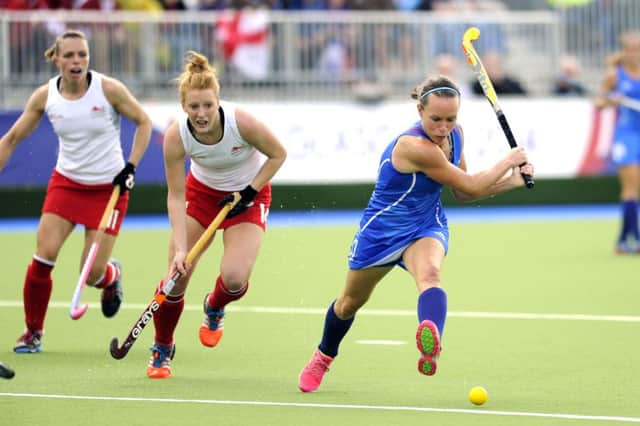Some sports heroes send wrong message about tobacco


What a sporting extravaganza we’ve had in Scotland in recent weeks!
The Commonwealth Games in Glasgow and golf’s Ryder Cup at Gleneagles showcased our nation wonderfully.
Advertisement
Hide AdAdvertisement
Hide AdAnd we’re delighted these huge international events also demonstrated Scotland’s commitment to tackling the harm caused by smoking as we move forward with our vision for a generation free from tobacco.
ASH Scotland is proud to have fired the starting gun on the successful smoke-free policy at the Commonwealth Games and to have teed off an important challenge to the Ryder Cup’s European and US teams to think about public-facing tobacco use within their sport.
The first ever Friends of The Scotsman article last year was about our efforts to make the Glasgow Commonwealth Games smoke-free.
The 2012 London Olympics – which featured designated smoking areas for those attending – provided an unacceptable benchmark, so the goal was to have a much stronger policy. Following our lobbying, backed by other Commonwealth nations and Scotland’s health chiefs, the Games venues were made smoke-free for spectators.
The organisers supported our view that there was no place for tobacco at the Games. An event celebrating healthy achievement and providing positive role models for our young people had to support people to enjoy a smoke-free experience. It also had to ensure clean-air for families visiting the showpiece competitions.
The policy was not comprehensive – the Games provided designated smoking areas for staff and volunteers and for competitors, so was not a fully “tobacco-free” event.
Nevertheless, the stance taken represented considerable progress. What’s more, it was implemented very smoothly, without a single complaint or flouting of the policy recorded, along with high levels of spectator approval.
The Glasgow 2014 organisers are now ensuring the lessons learned from the smoke-free initiative are promoted as good practice for future Commonwealth Games.
Advertisement
Hide AdAdvertisement
Hide AdFollowing the Games, golf lovers’ attention turned to Perthshire and the Ryder Cup.
It was brought to our attention that some professional golfers have been pictured in the media chomping on a cigar to celebrate a victory or puffing on a cigarette at times of pressure (a common misunderstanding – tobacco isn’t really a stress-reliever).
With the eyes of the world on the fairways of Gleneagles, we hoped Scotland wouldn’t be broadcasting tobacco use among the players during the event.
There was no smoke-free policy for the competitors, so we decided to put tobacco use on the agenda.
The Ryder Cup organisers were very helpful when we contacted them and were supportive when we suggested we would like to write to the European and US teams about the issue.
Our letter to the team members asked them for their practical support in helping us to realise Scotland’s compelling vision for putting tobacco out of sight, out of mind and out of fashion for our children.
Most smokers know that tobacco is a harmful substance and most say they would prefer not to have started using it. Tobacco is primarily a childhood addiction, with some 40 per cent of smokers starting under the age of 16 and two- thirds under 18, the legal age of purchase here.
We know the visibility of tobacco and its use by role models is a factor in young people’s experimentation, which too often leads to a lifelong addiction. We felt it was important that the golfers could inspire young people, by example, to good health and sporting achievement.
Advertisement
Hide AdAdvertisement
Hide AdSo we requested that they reflect on the nature of tobacco and support our goal by keeping its use out of the public eye, whether in front of spectators or in the media glare.
It was not an issue about whether they personally used tobacco, but about where they chose to use it and whether they chose to give it a public profile.
We hope the message was well received and that the players felt able to take into to account the impact of their potential tobacco use on those watching, especially on young fans. Doing so can certainly help young people have a sporting chance of not being drawn into a damaging and too often fatal addiction to tobacco.
• Sheila Duffy is Chief Executive Officer of Action on Smoking & Health (Scotland) www.ashscotland.org.uk